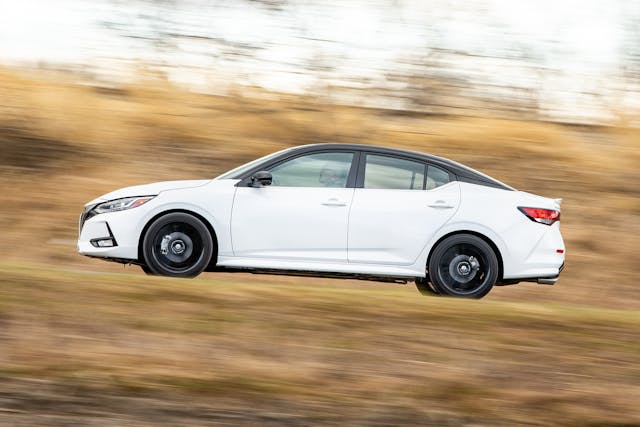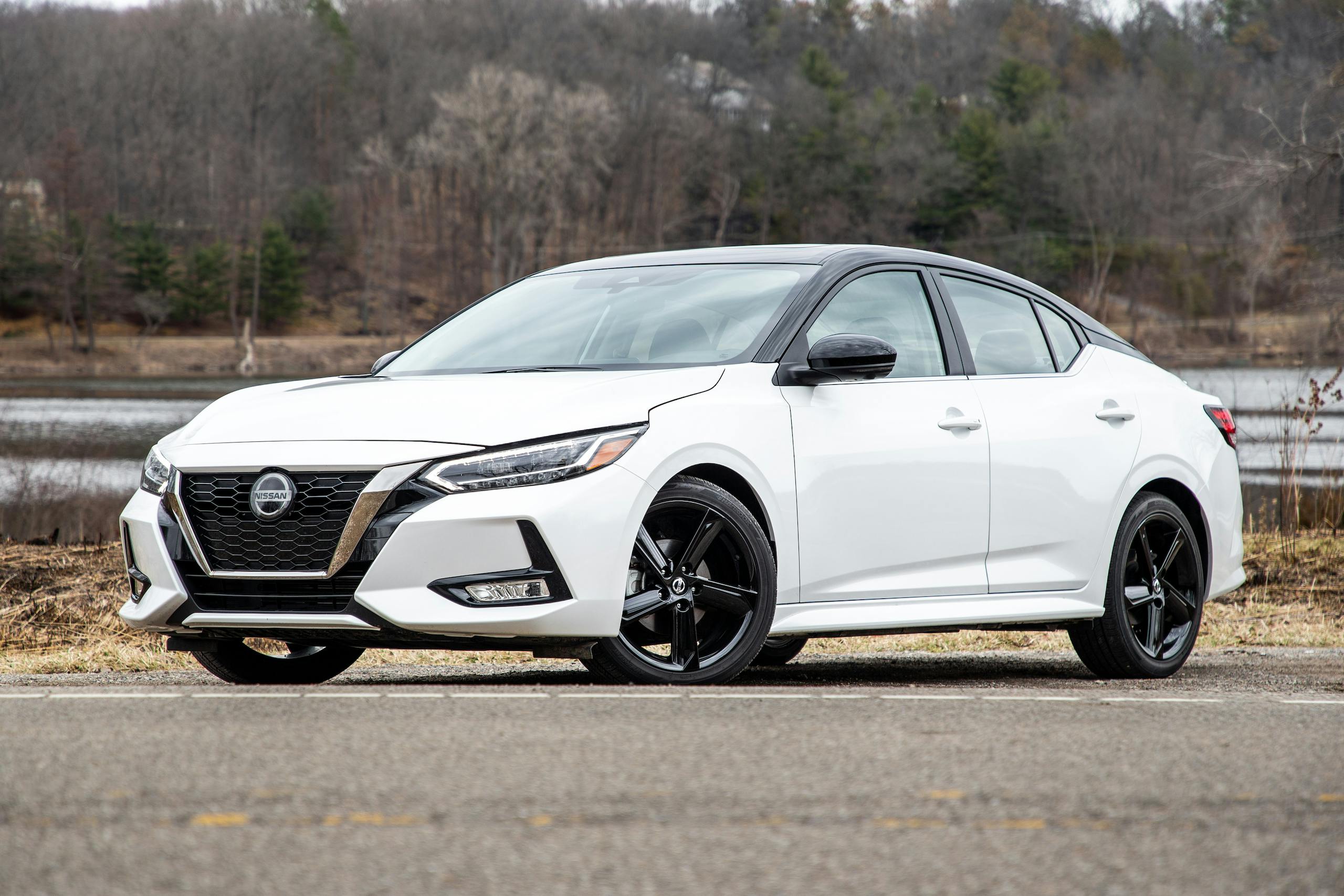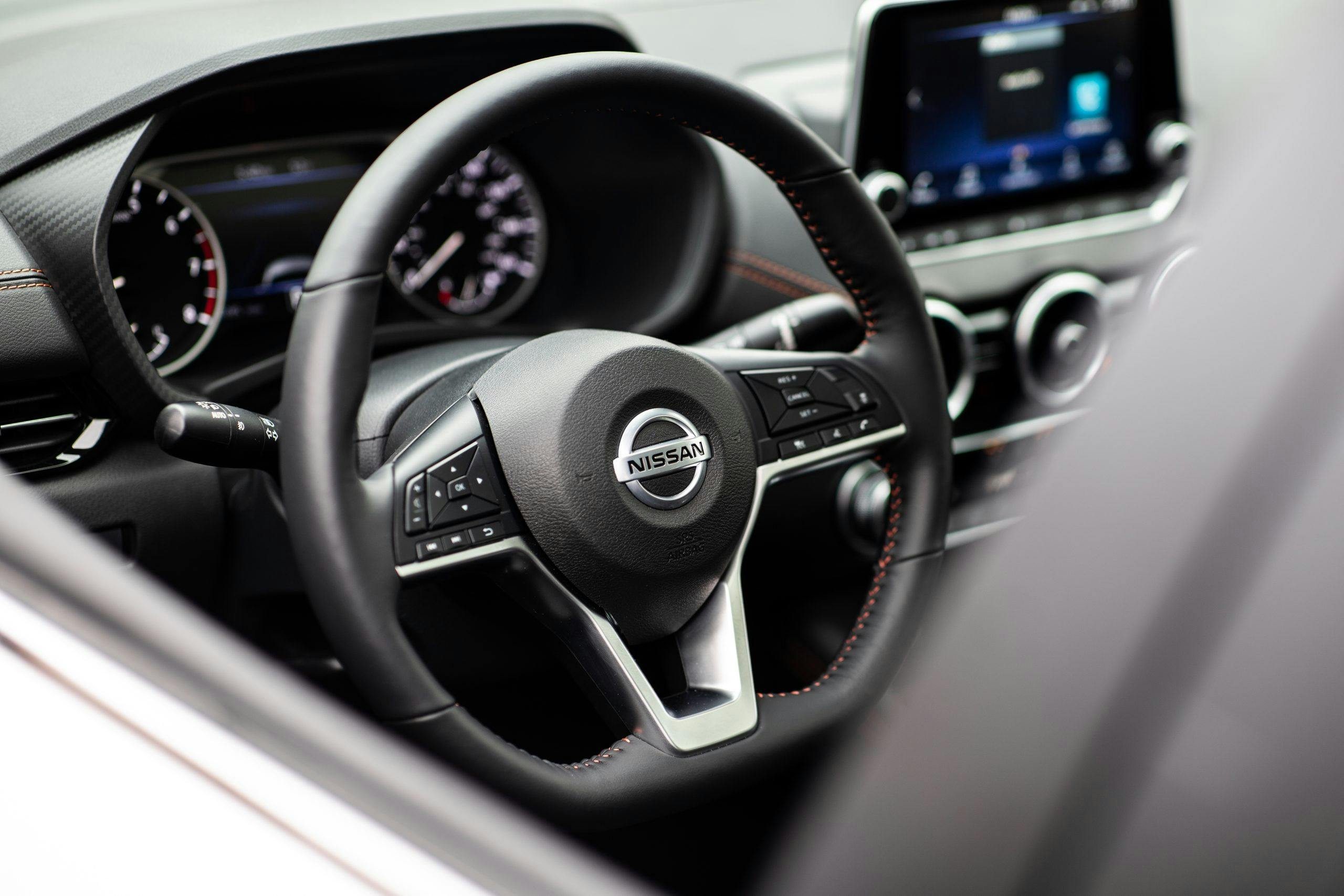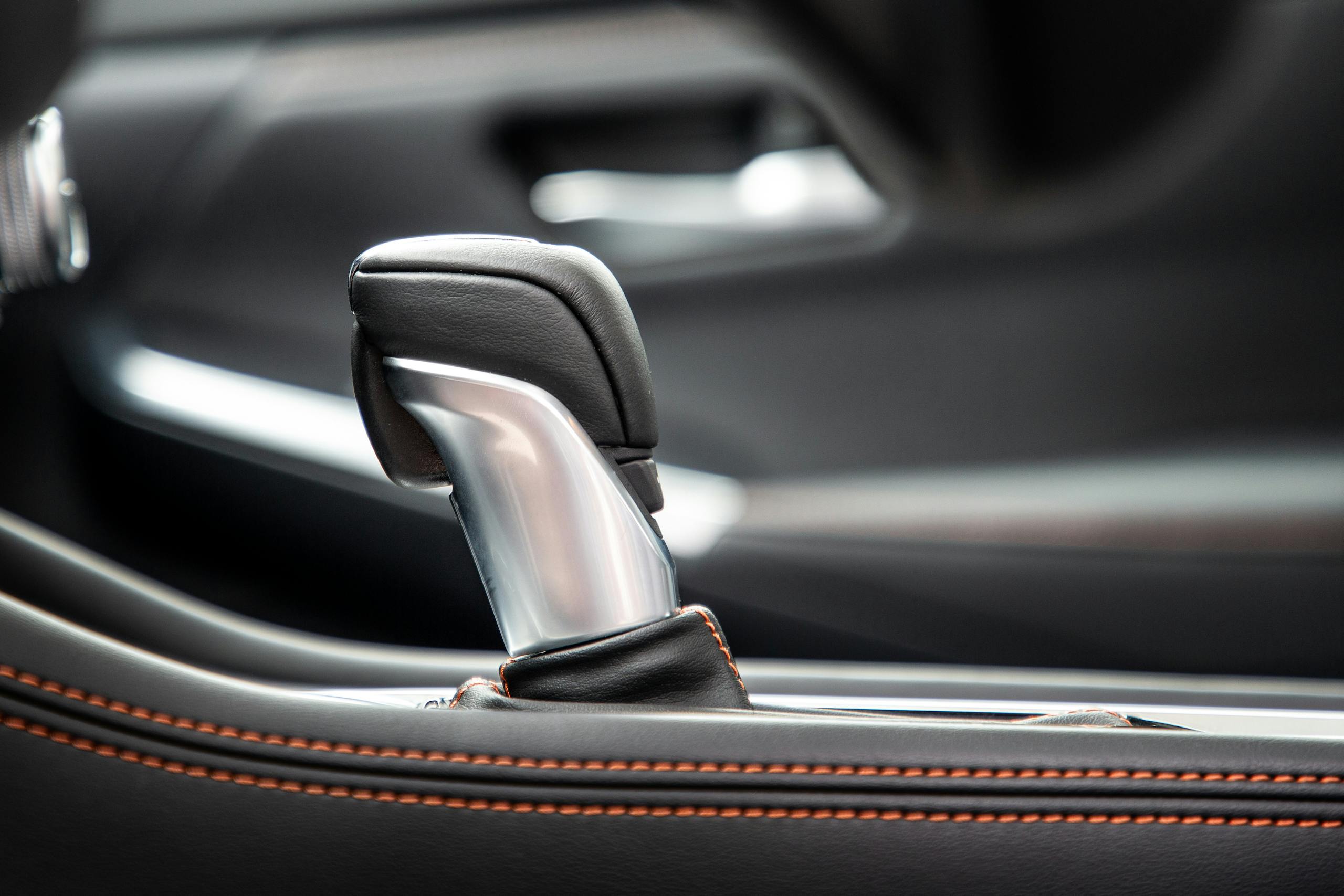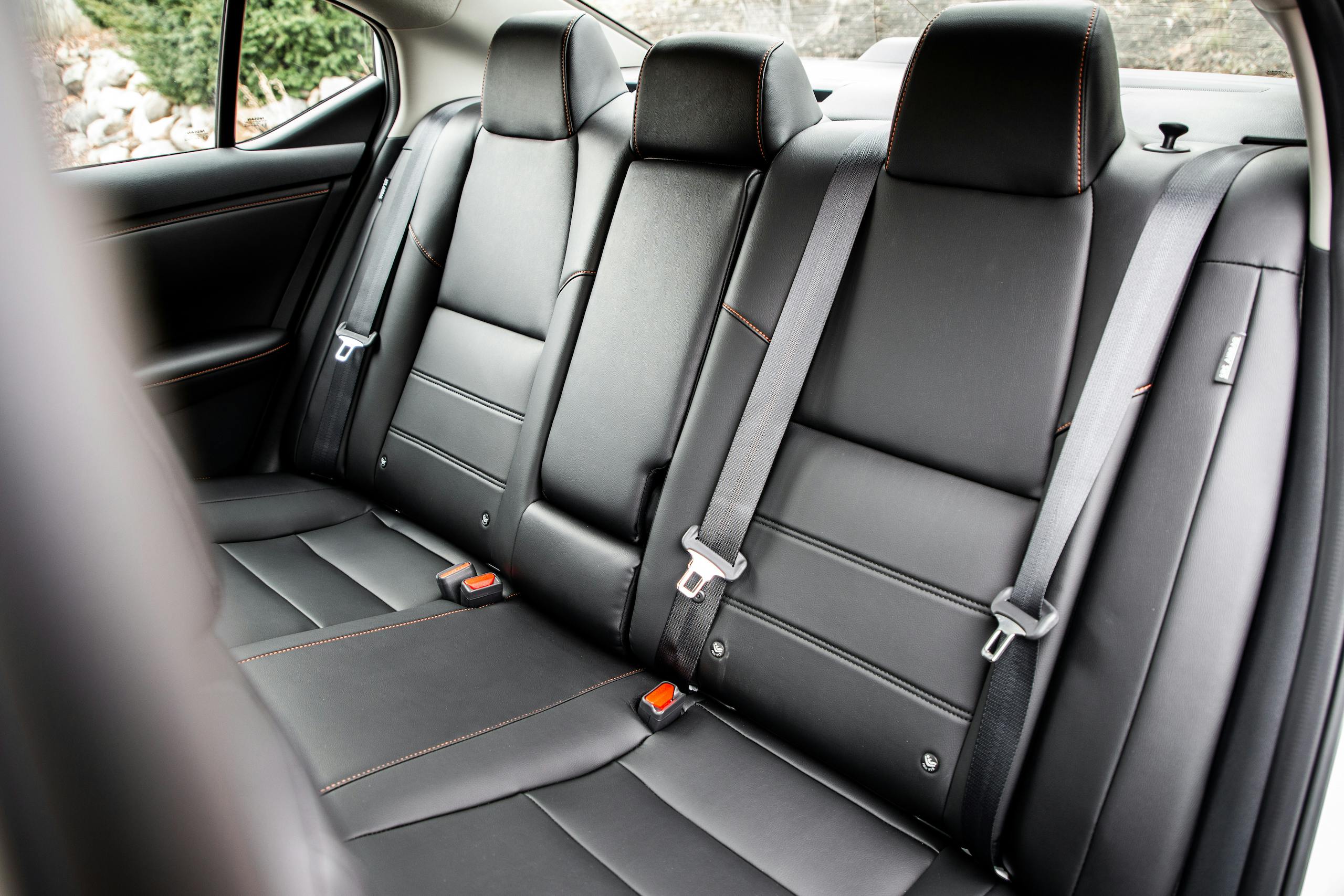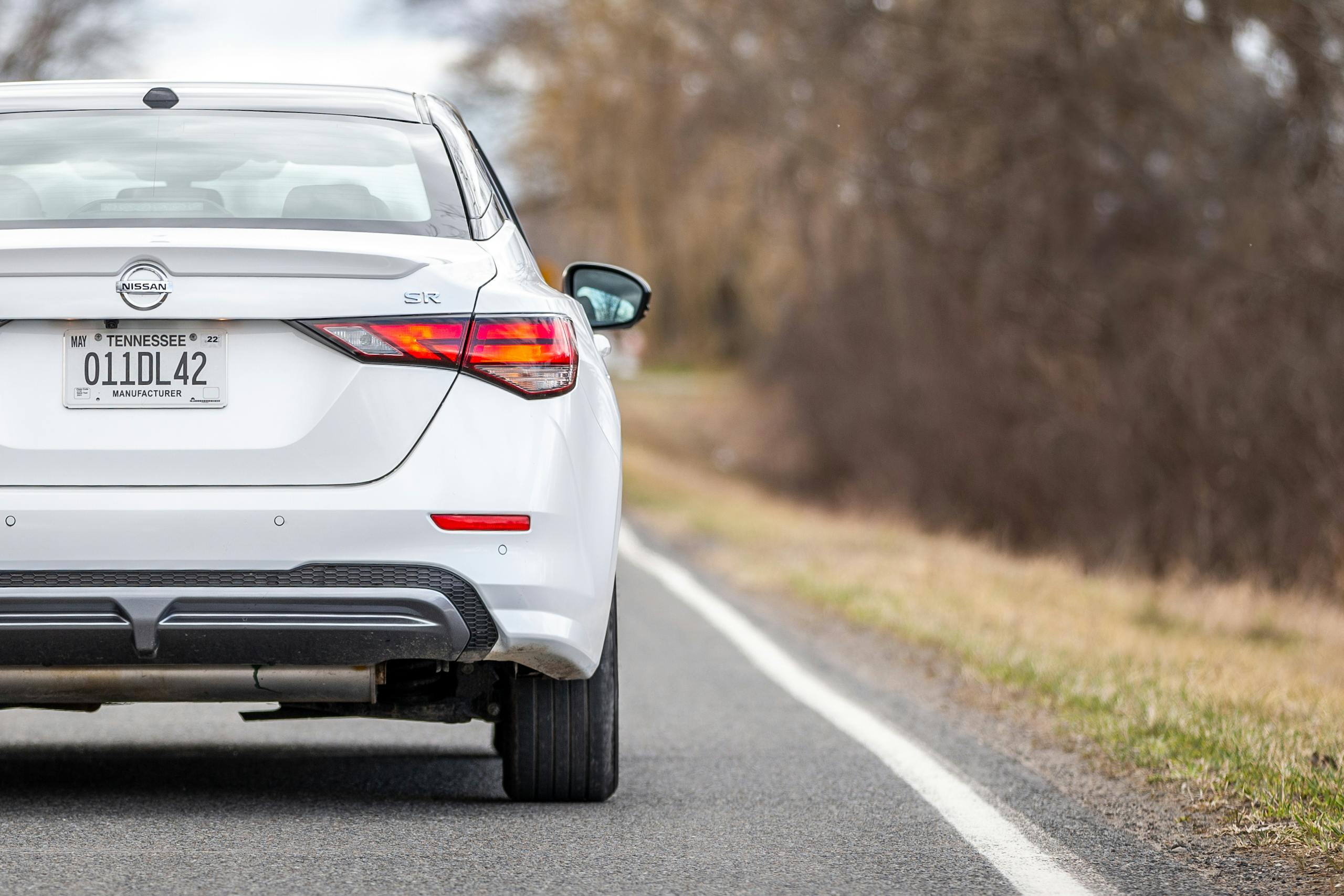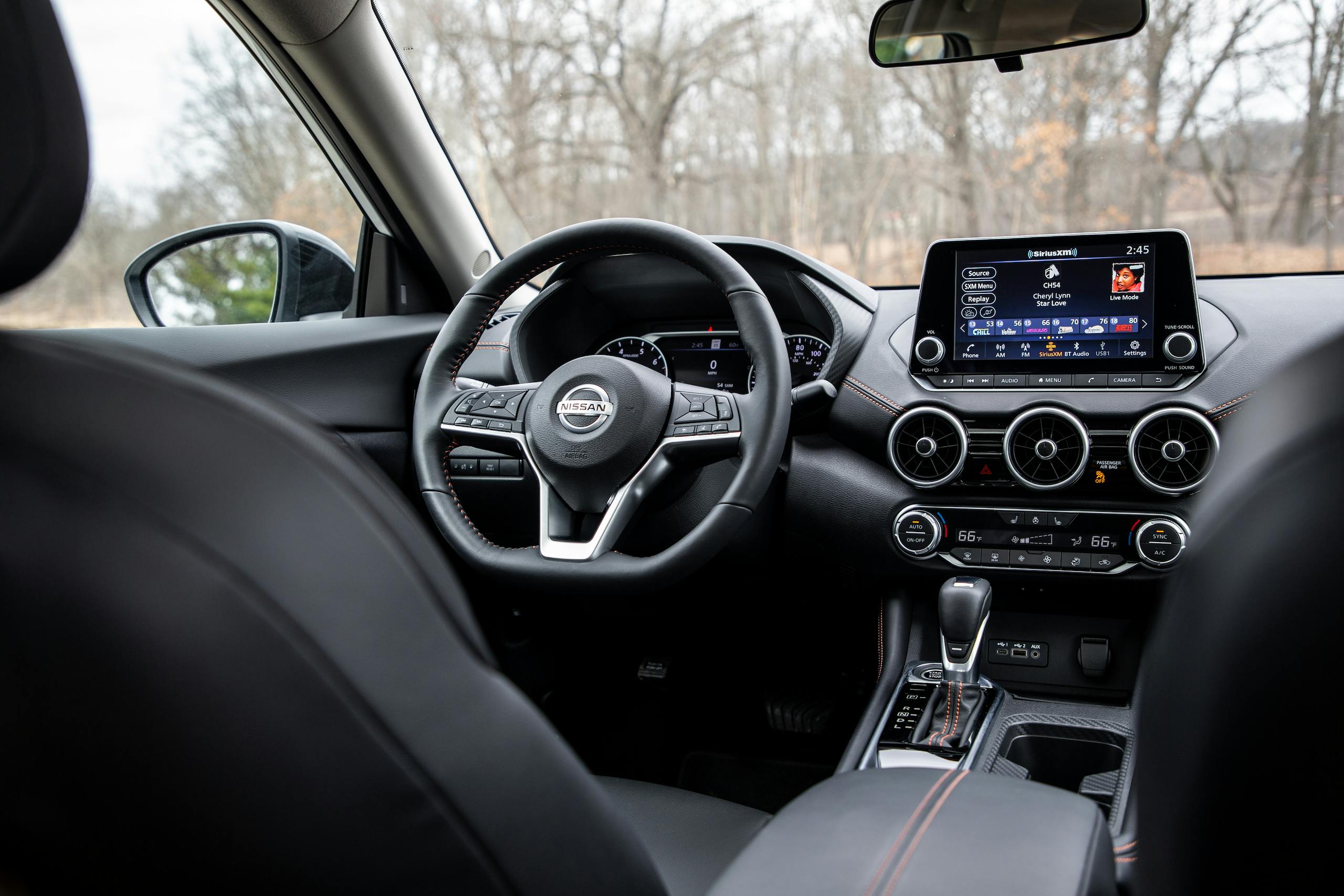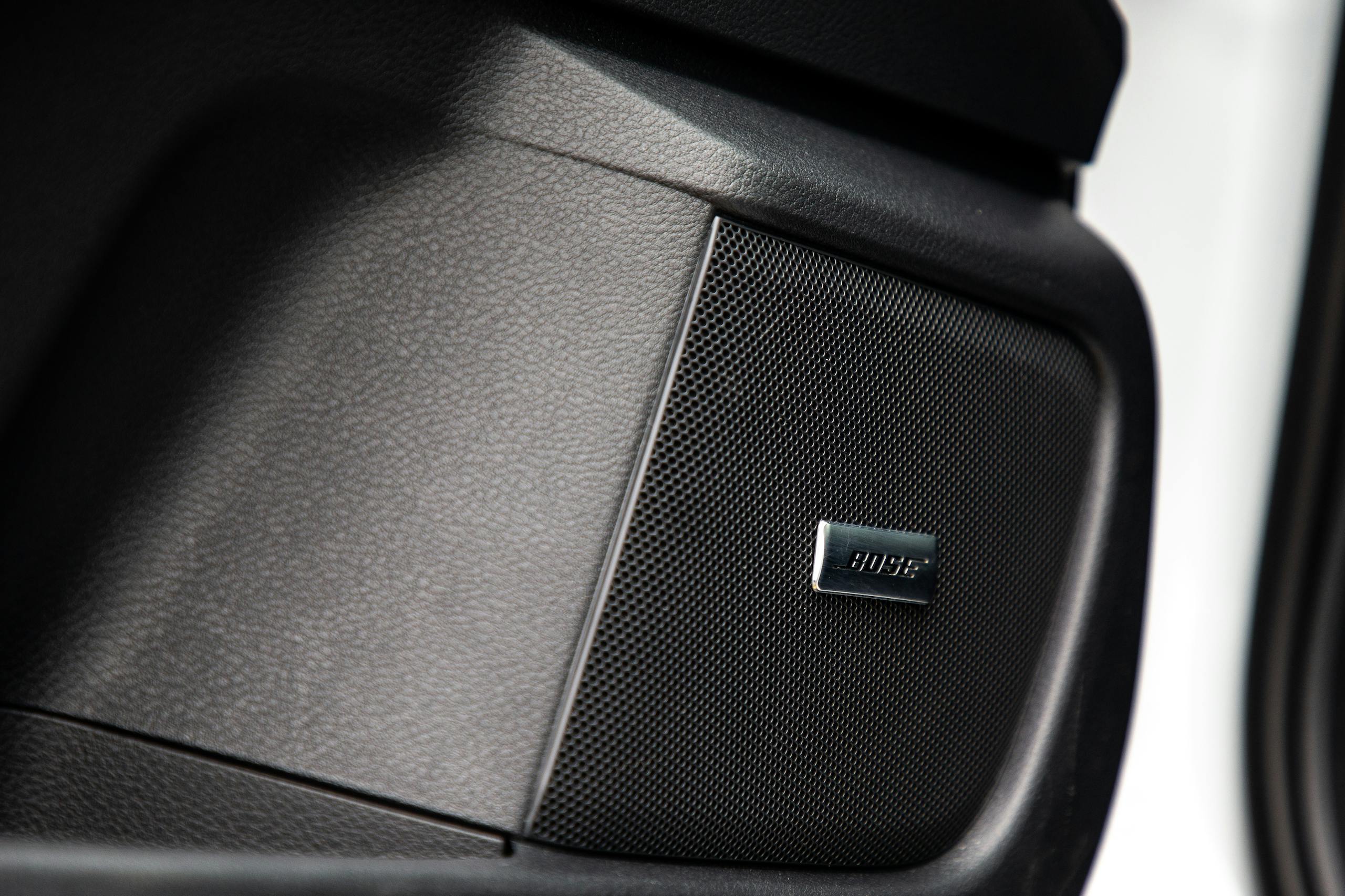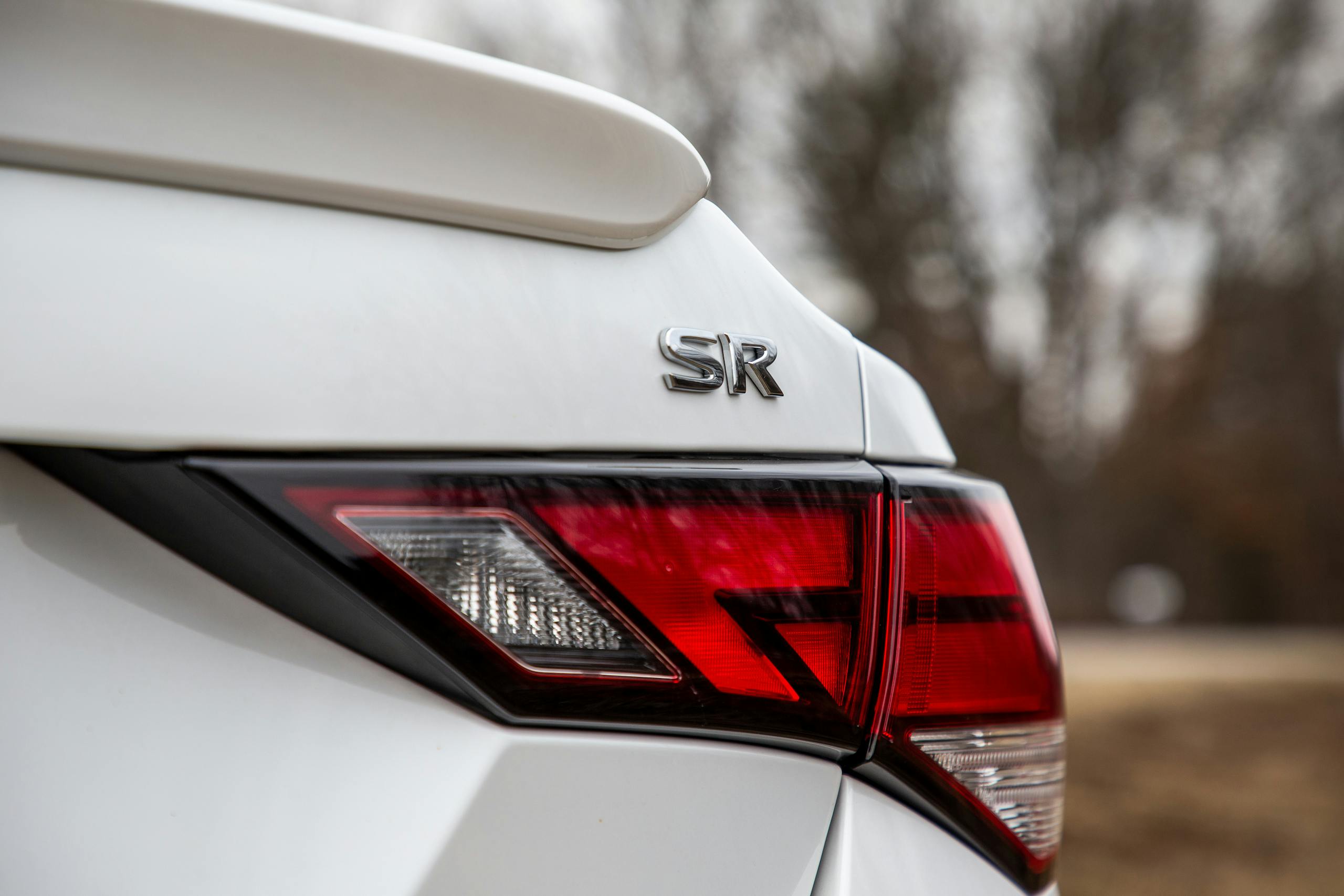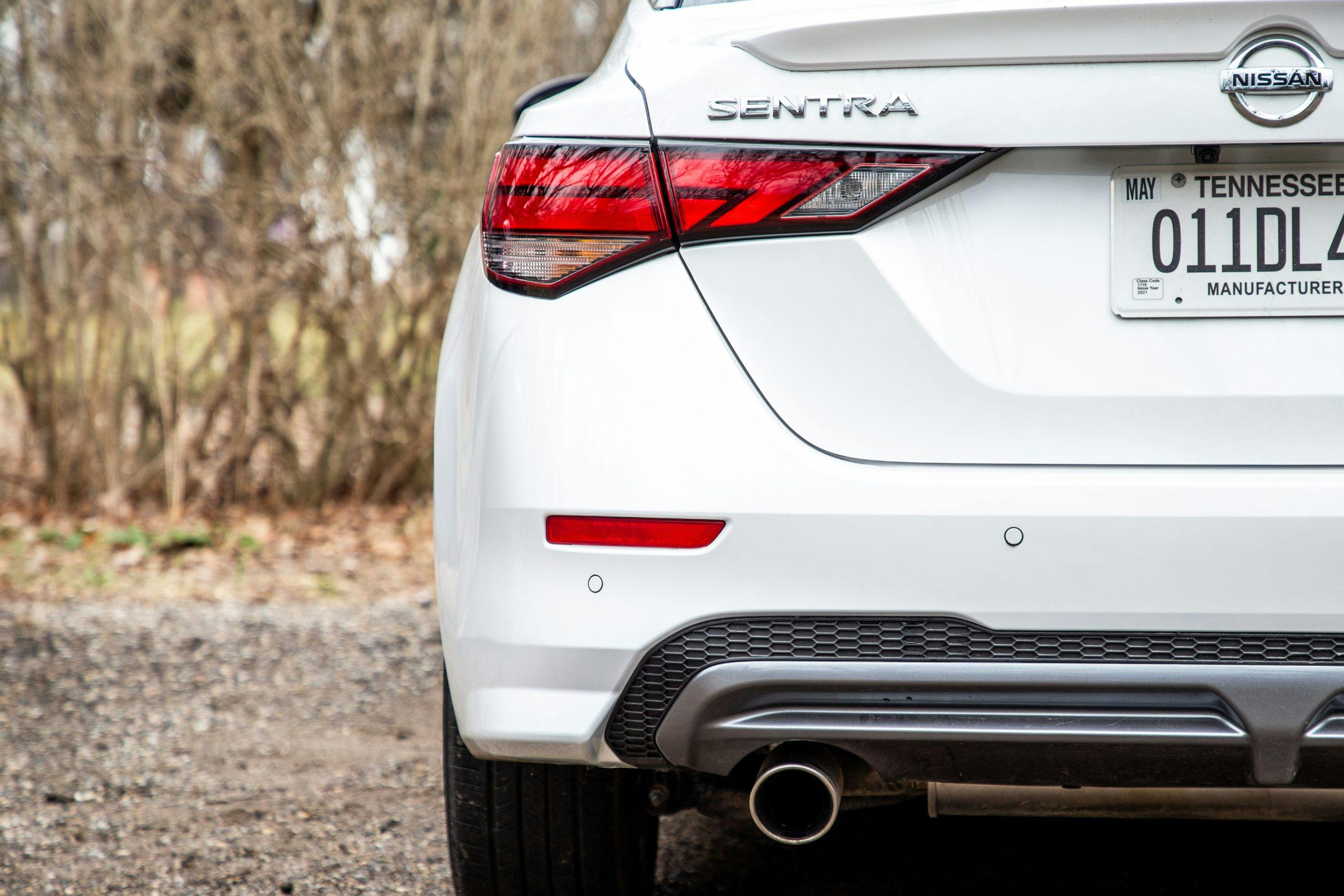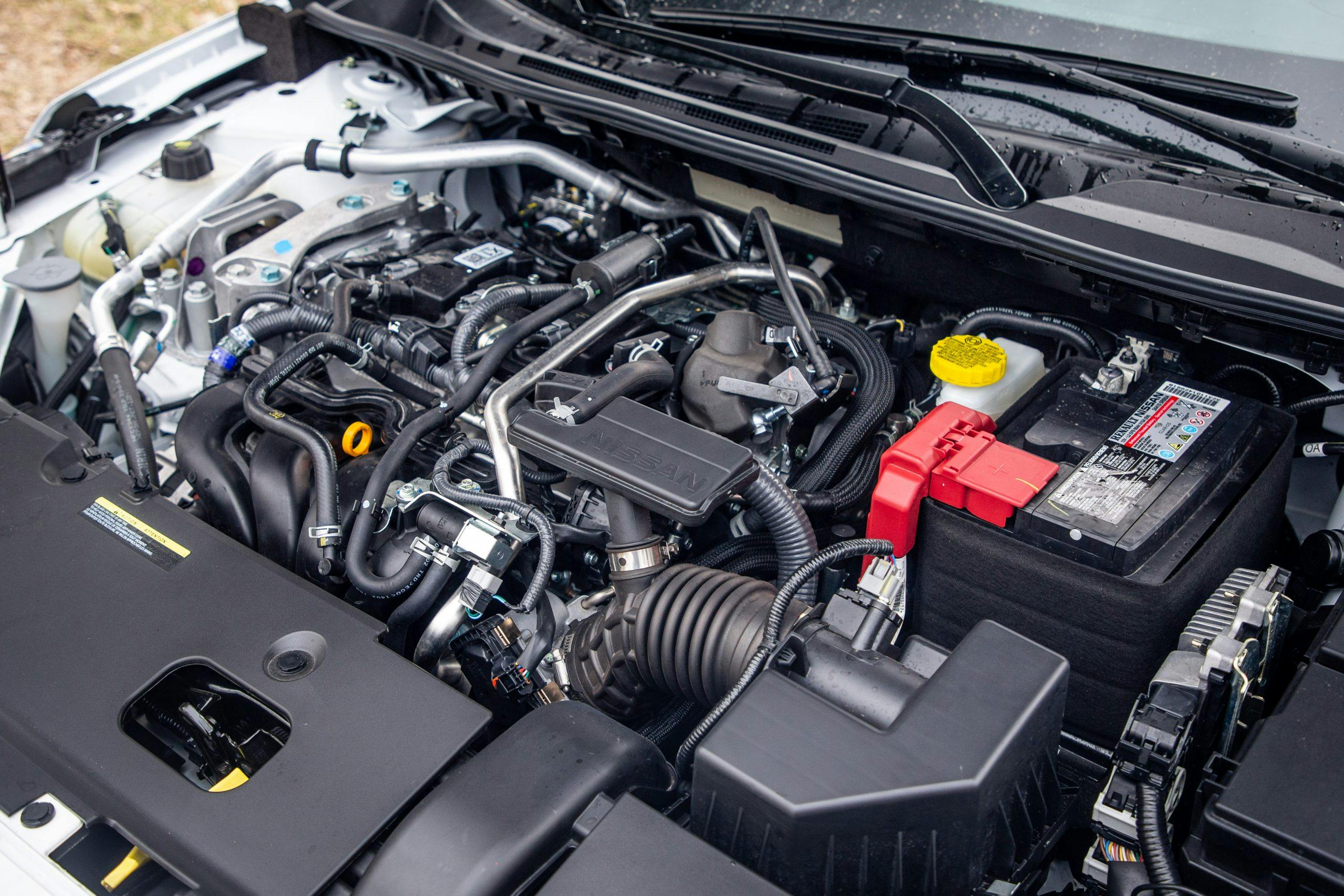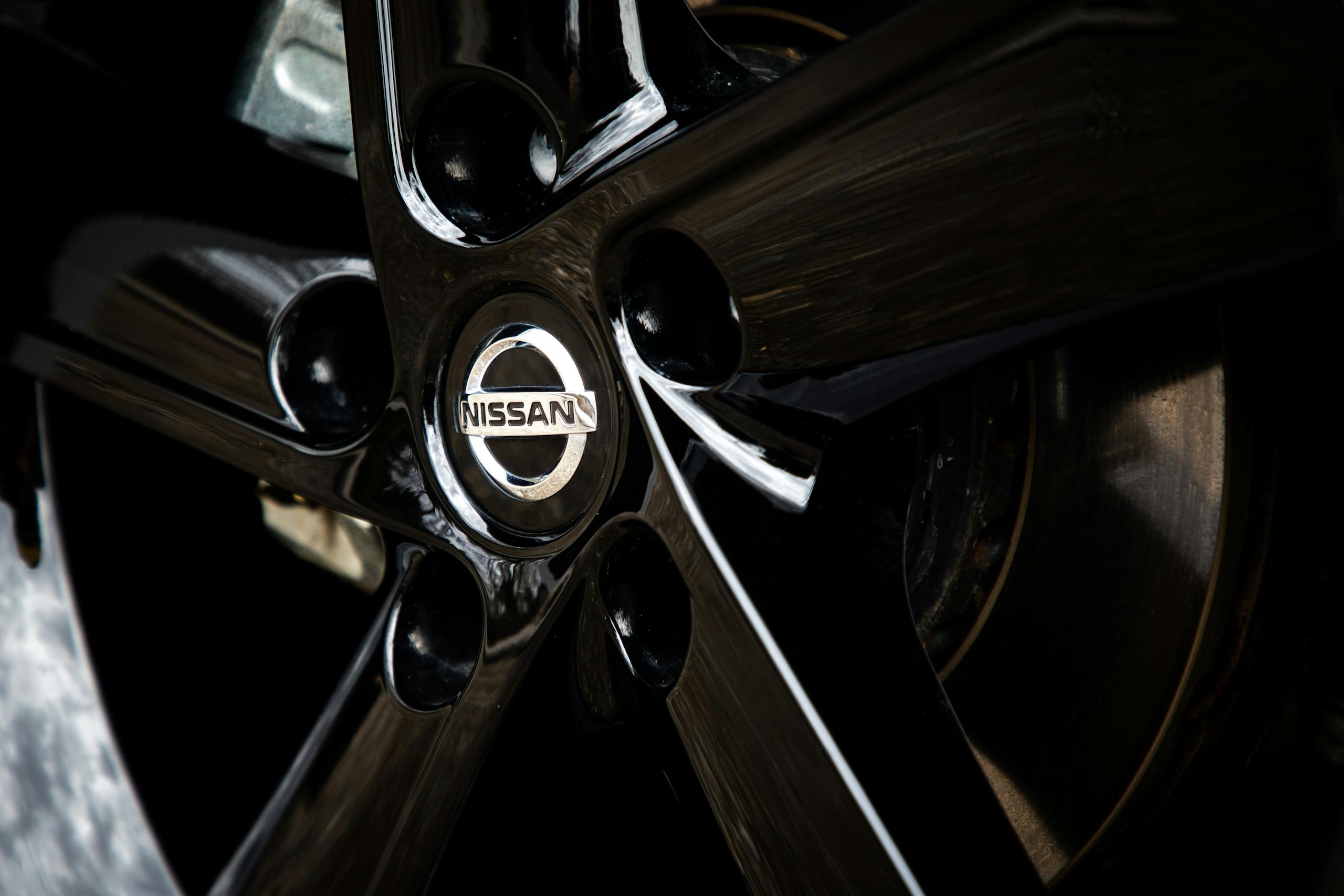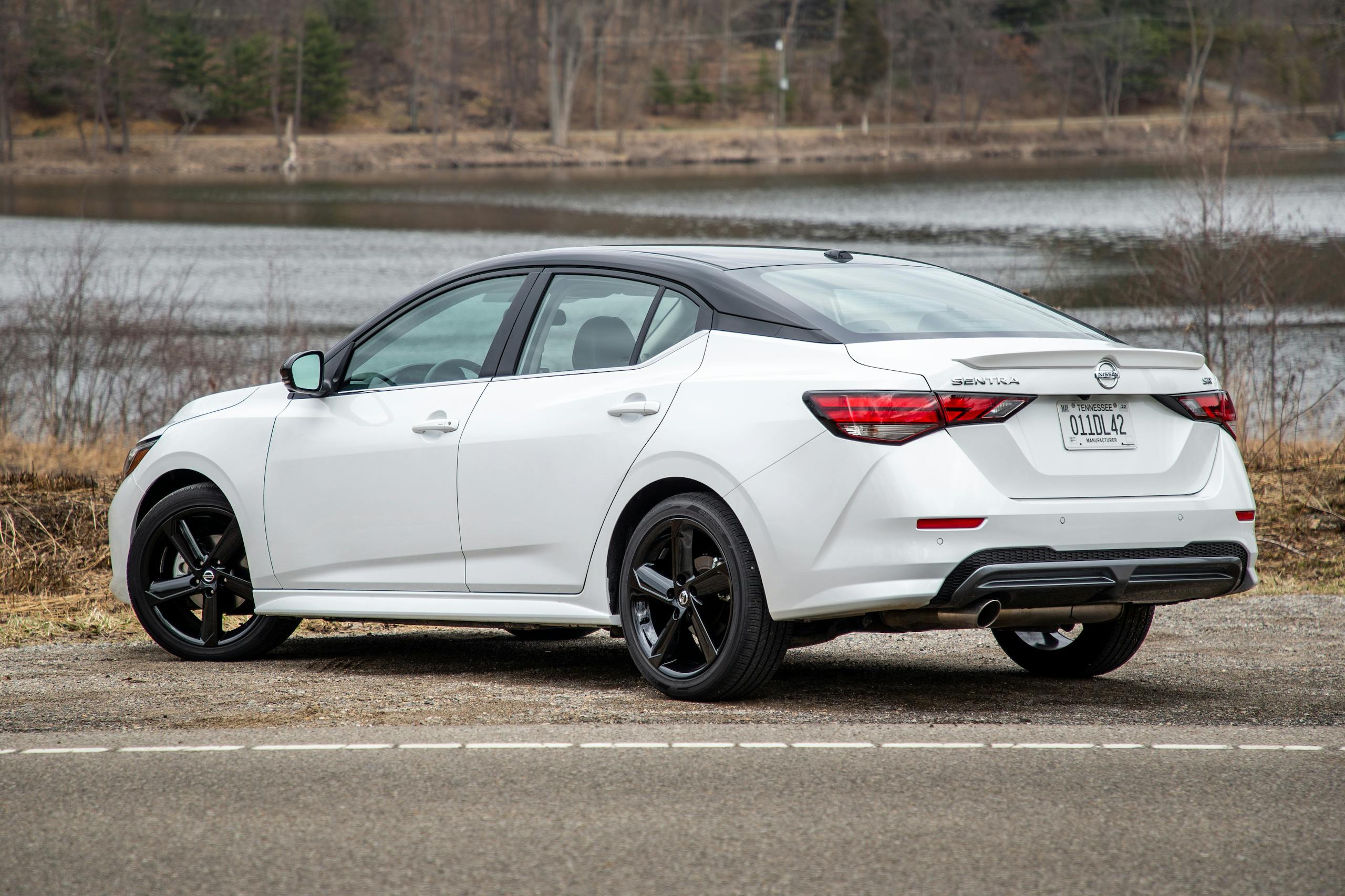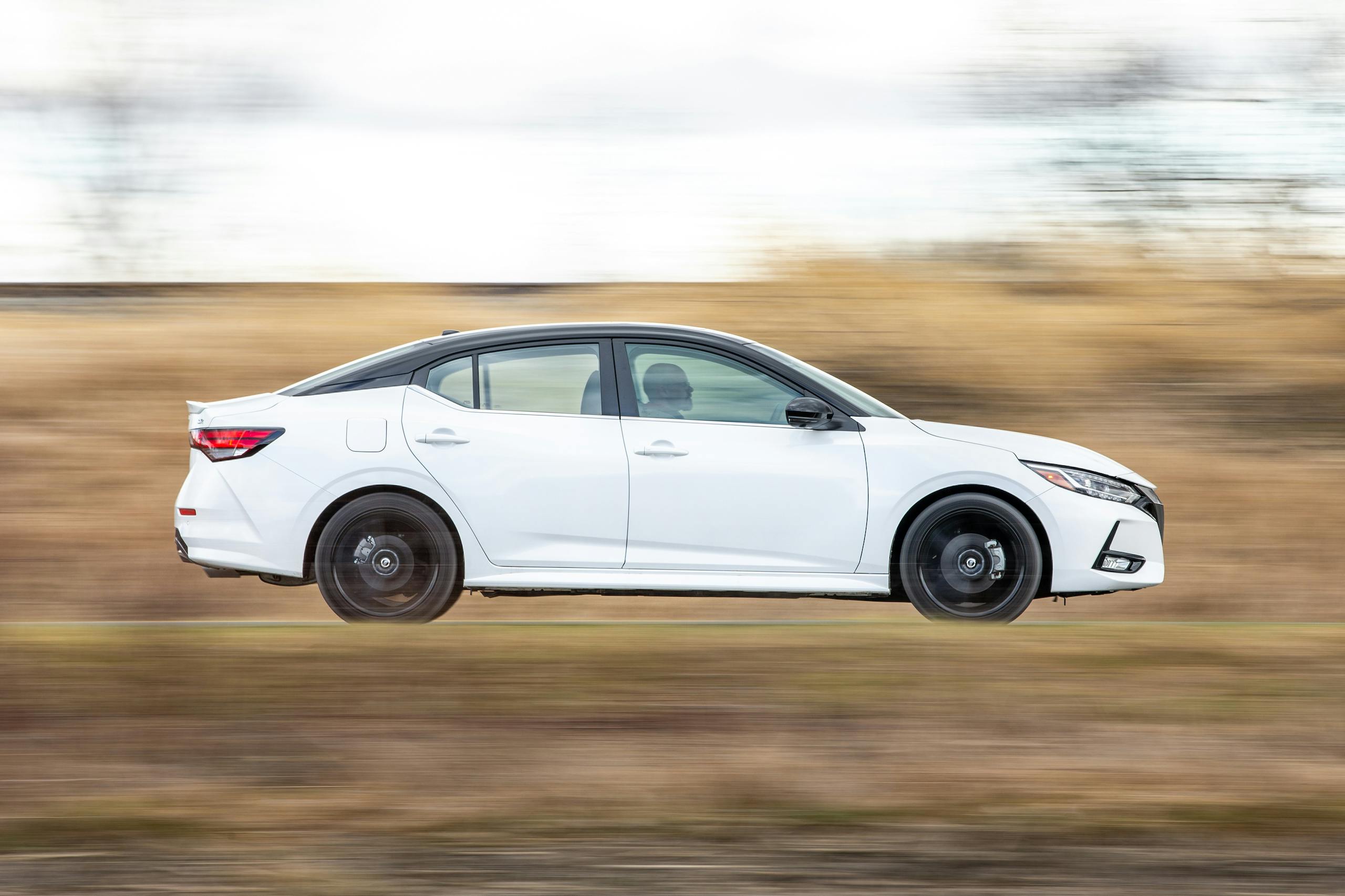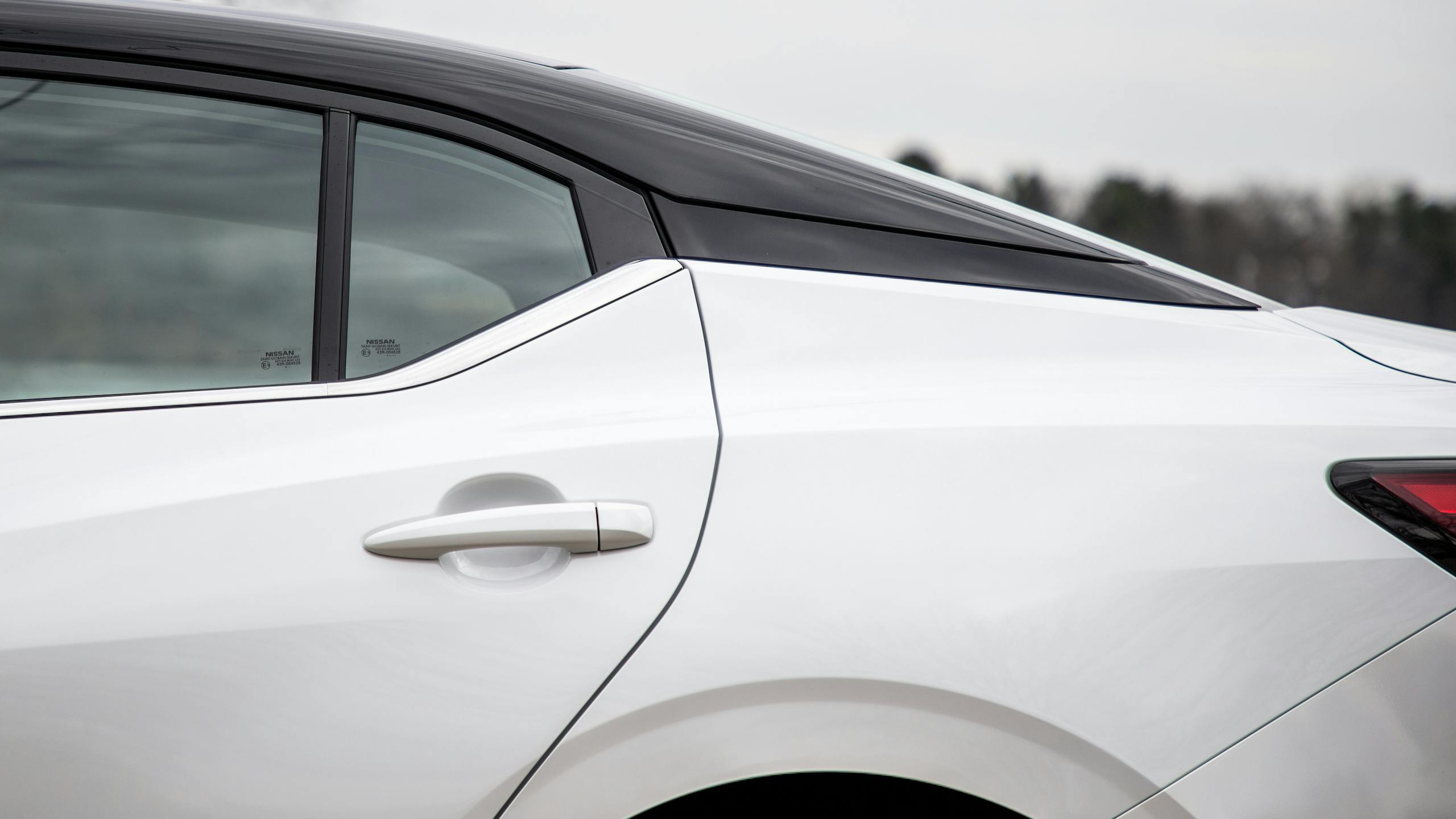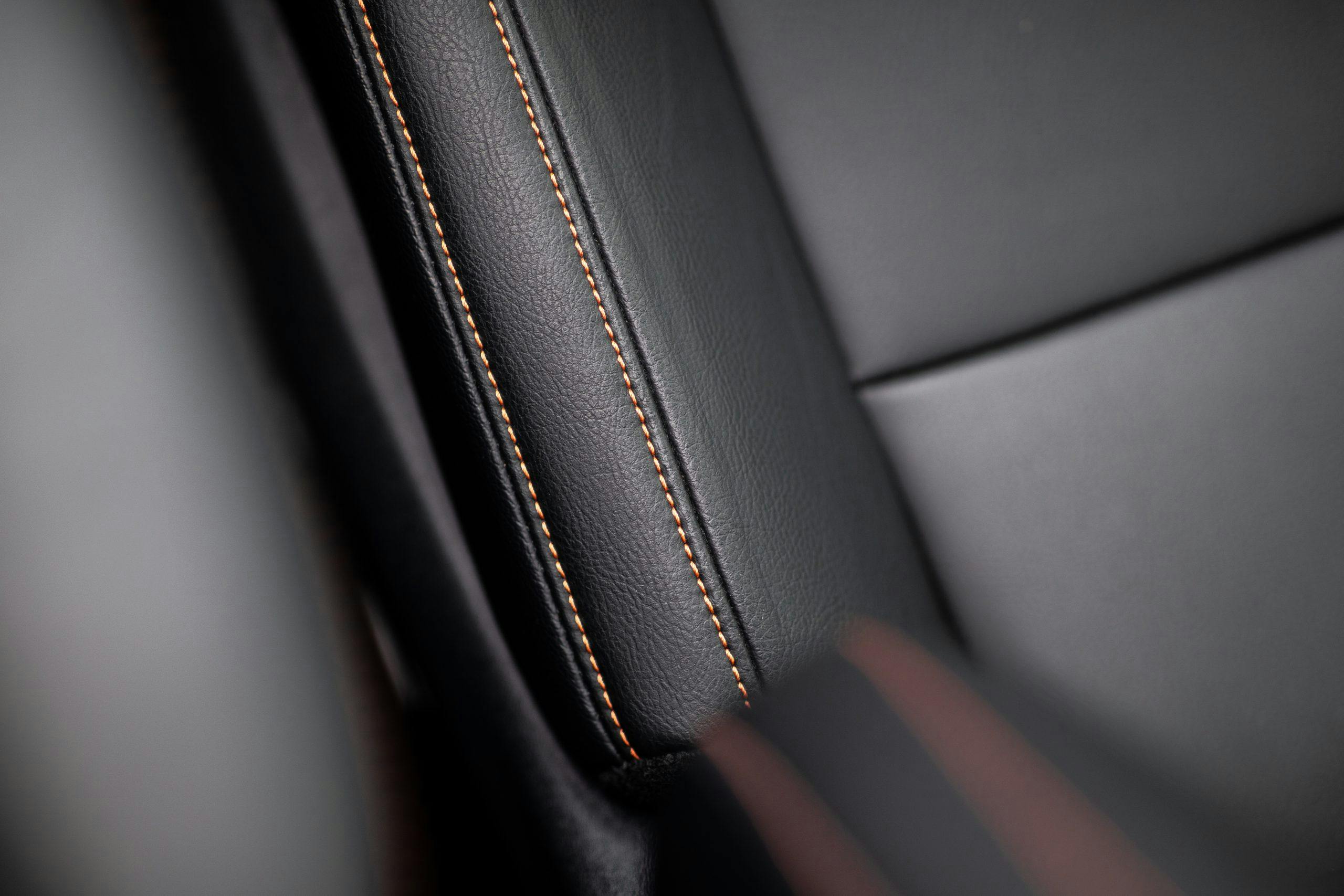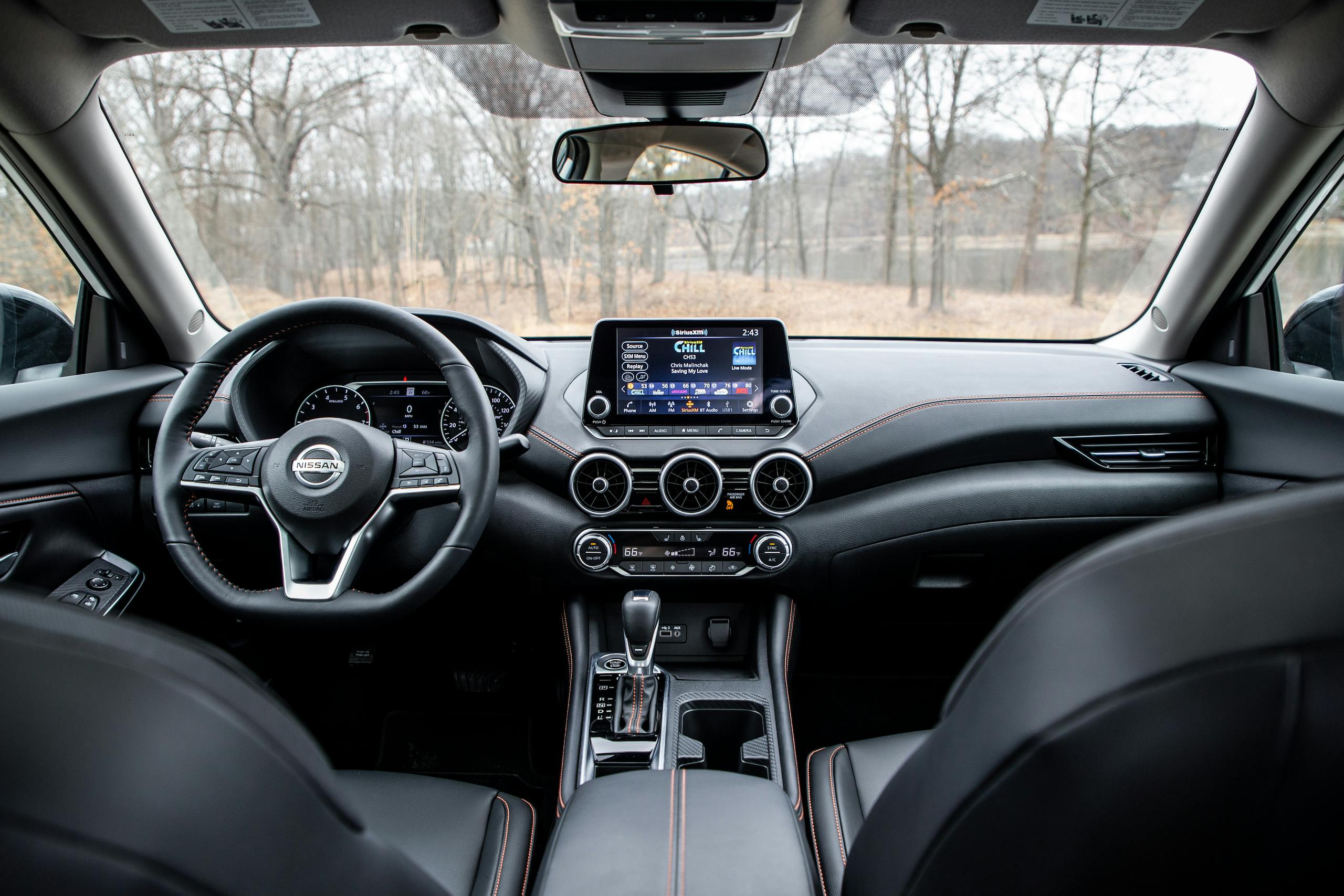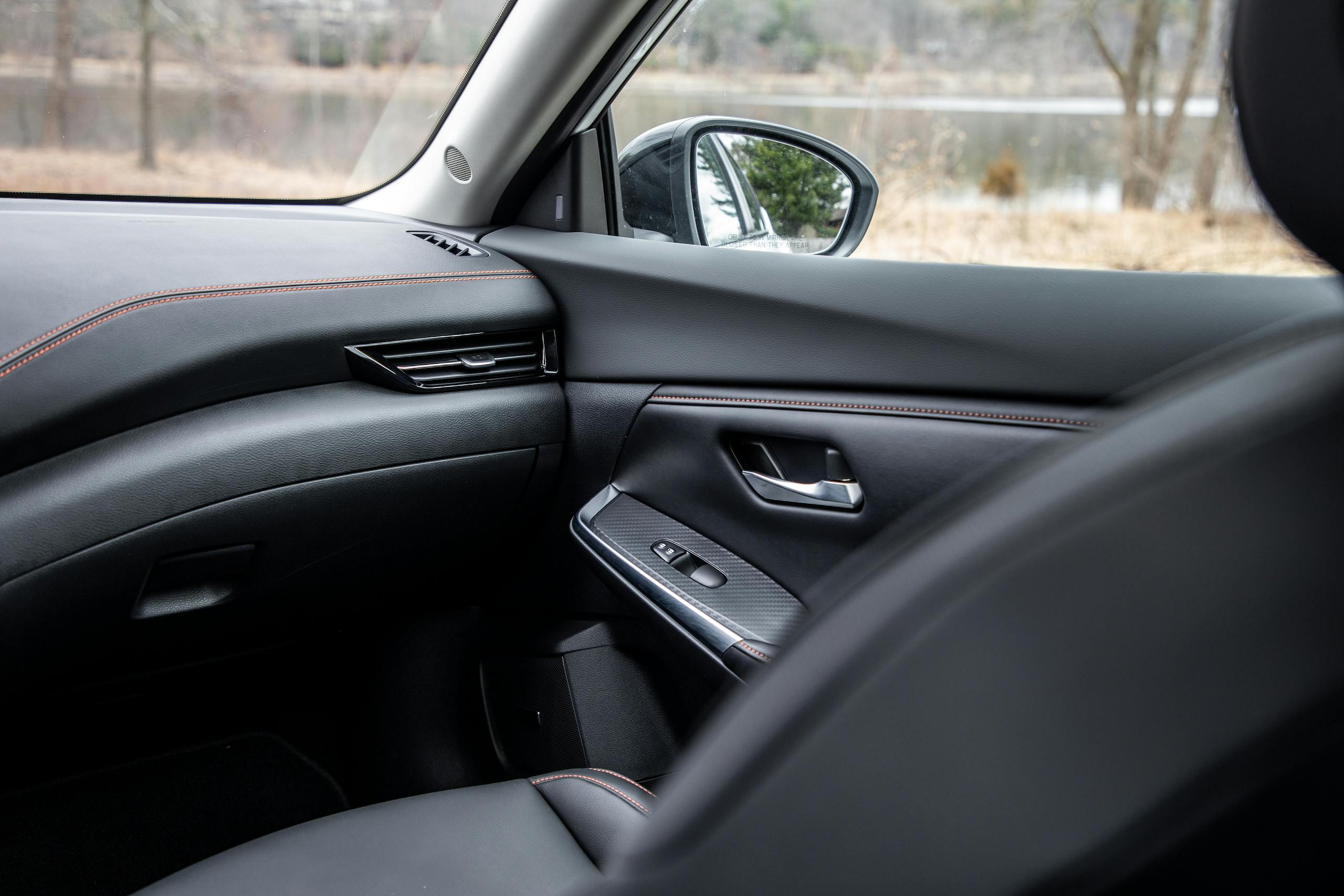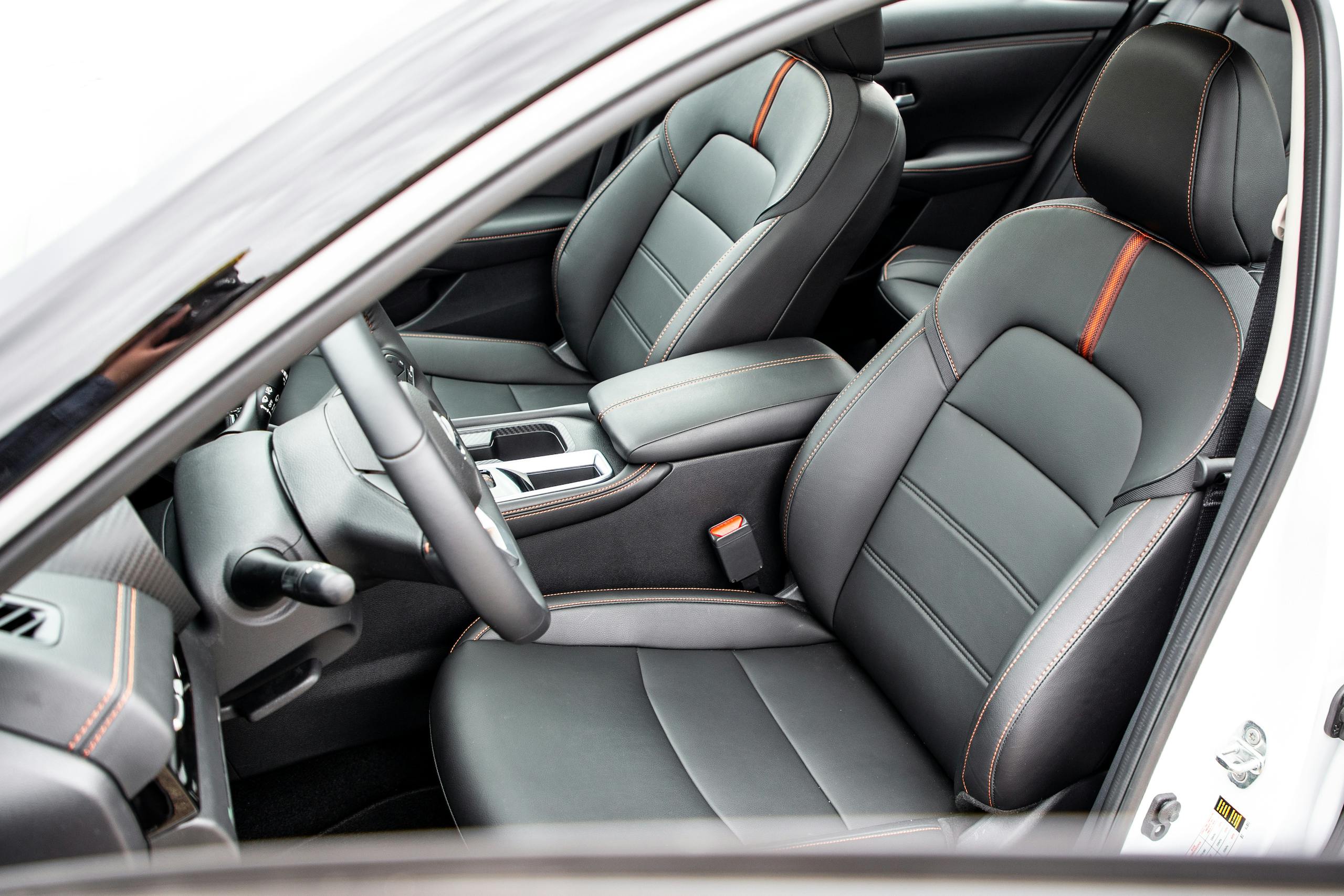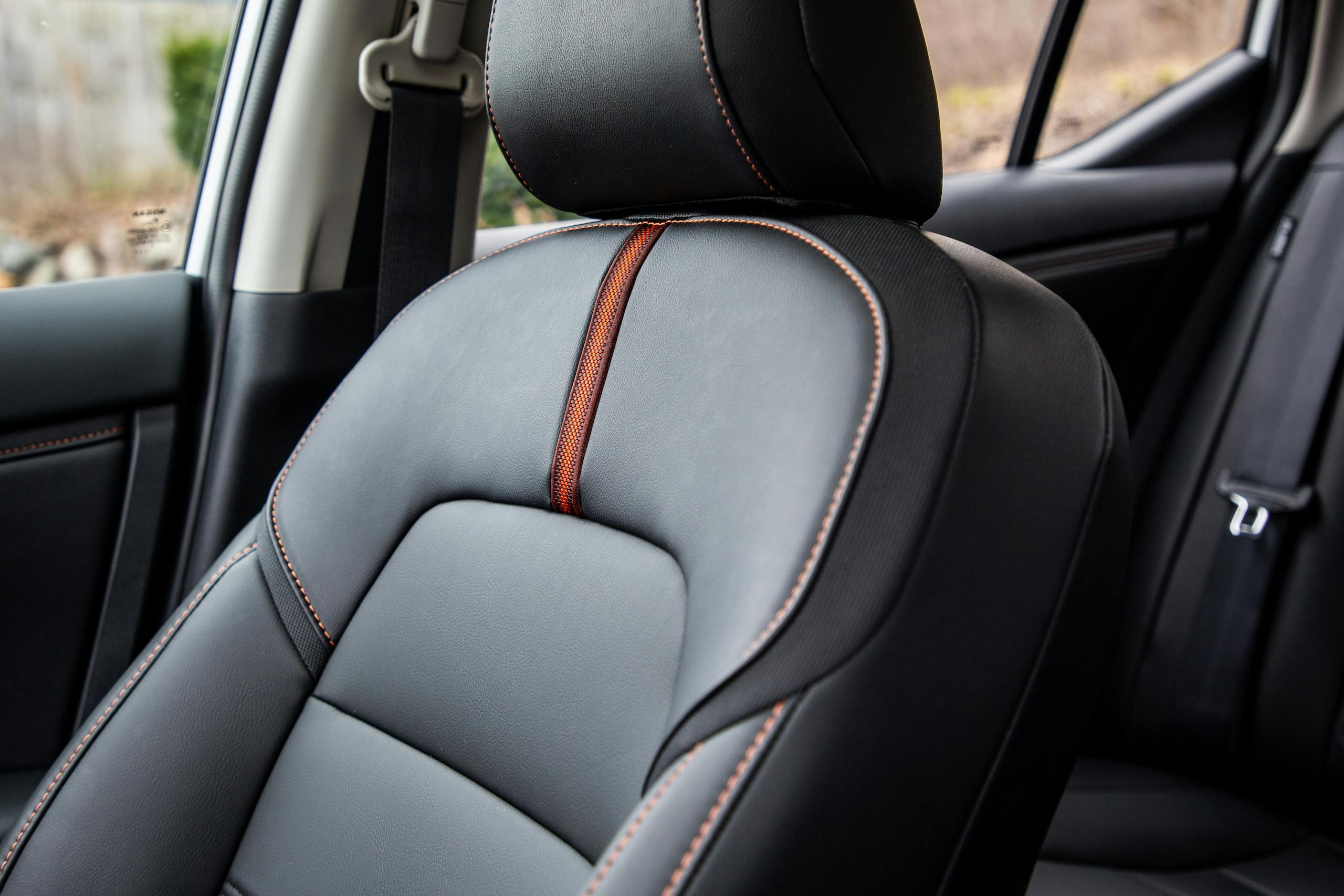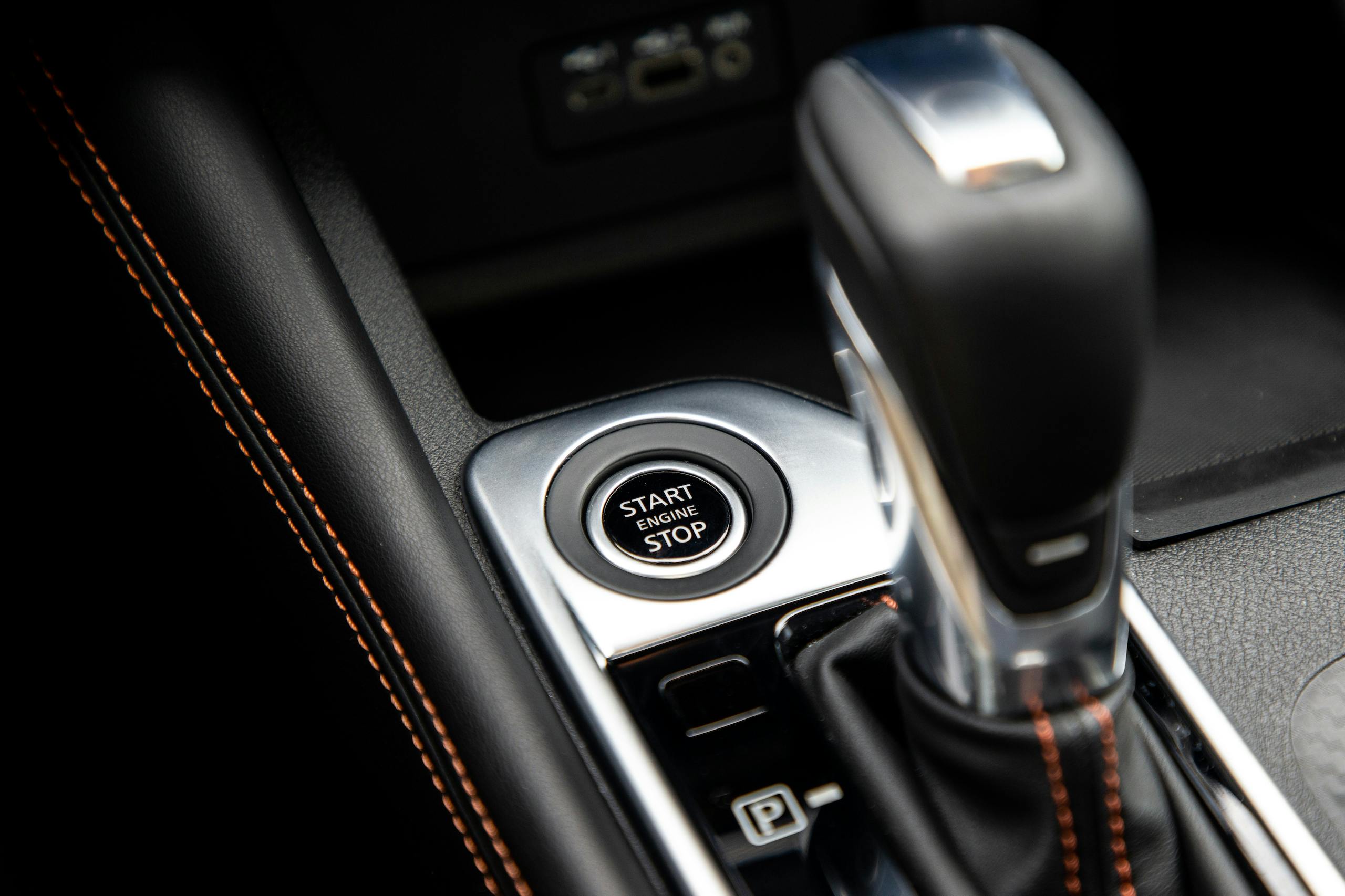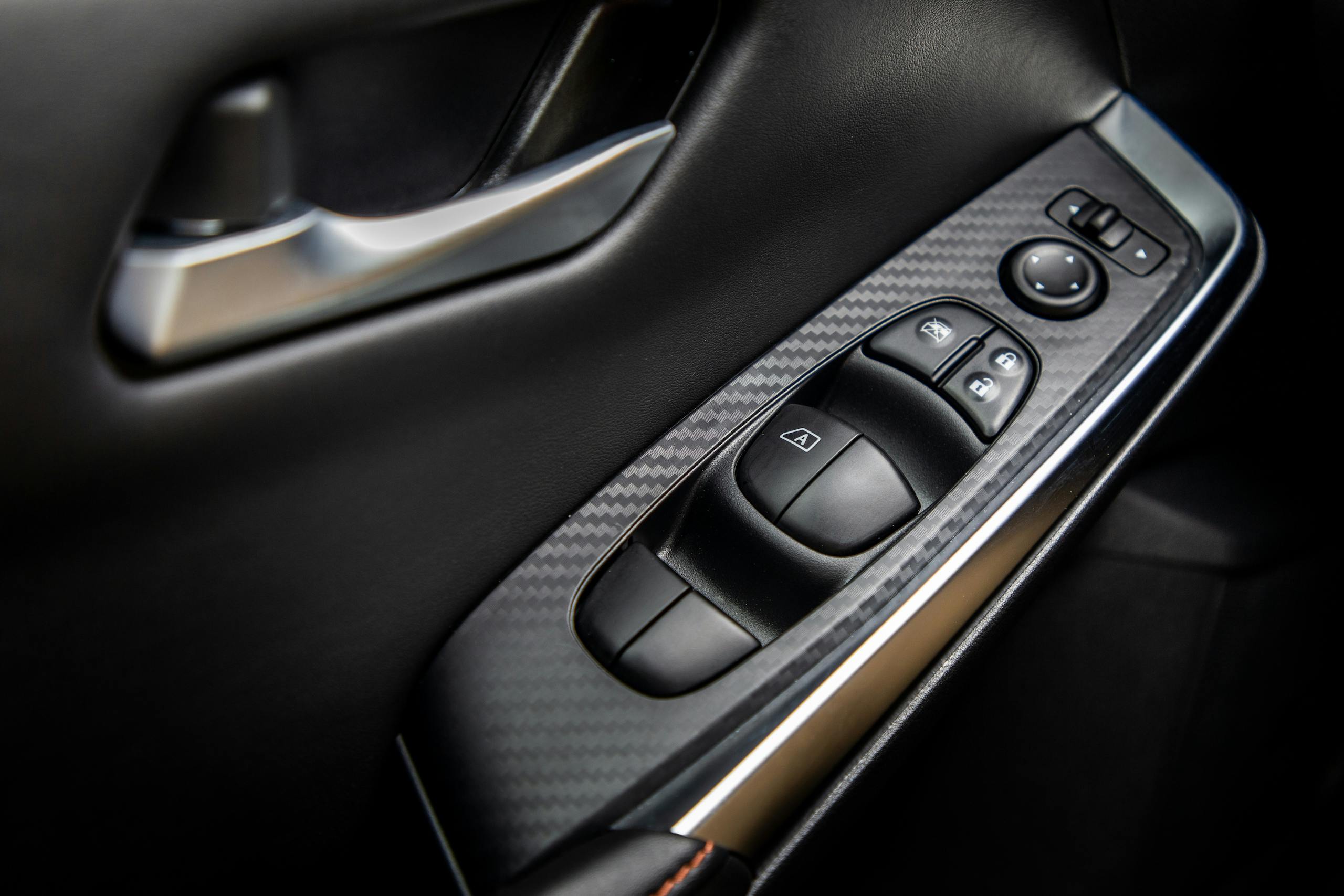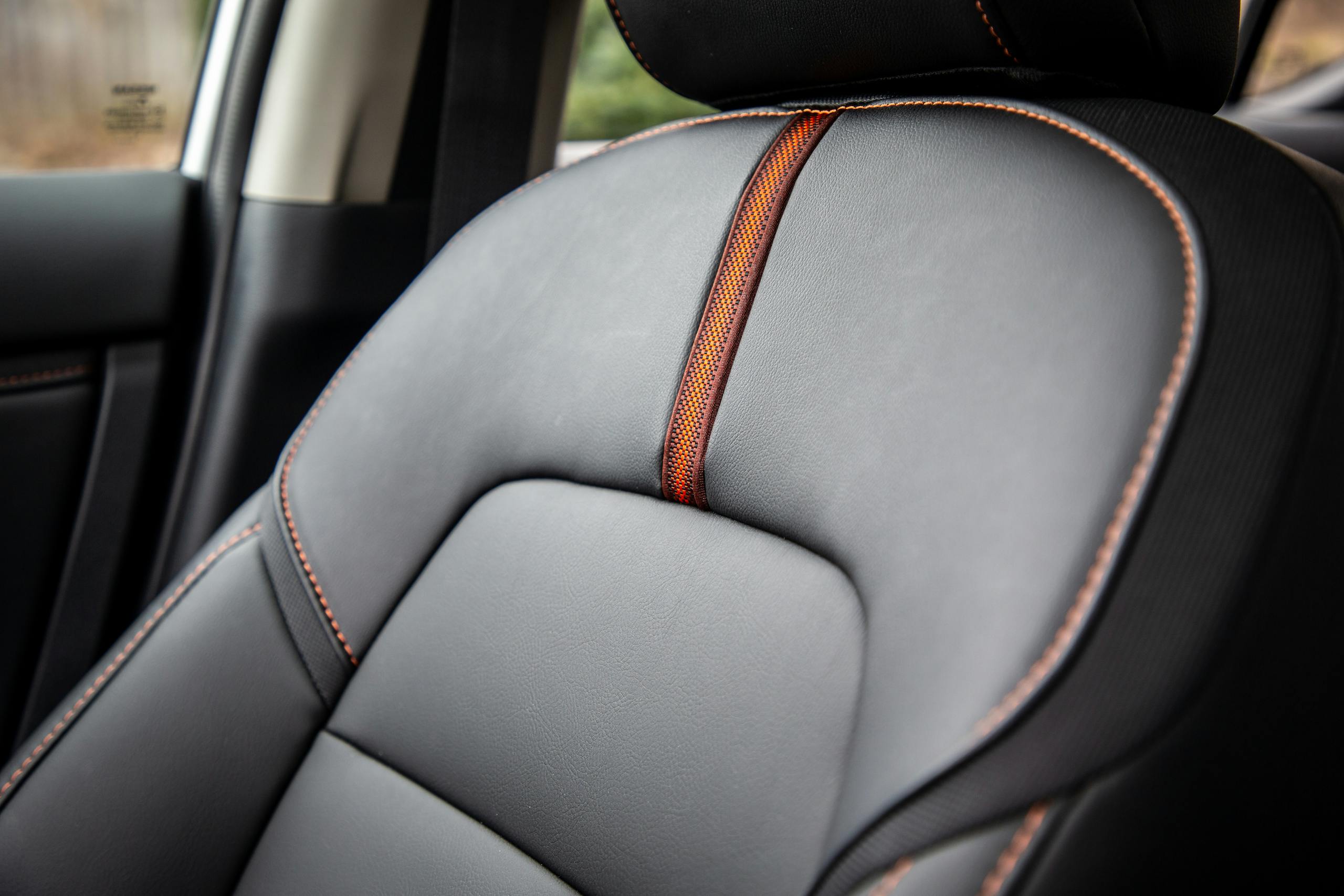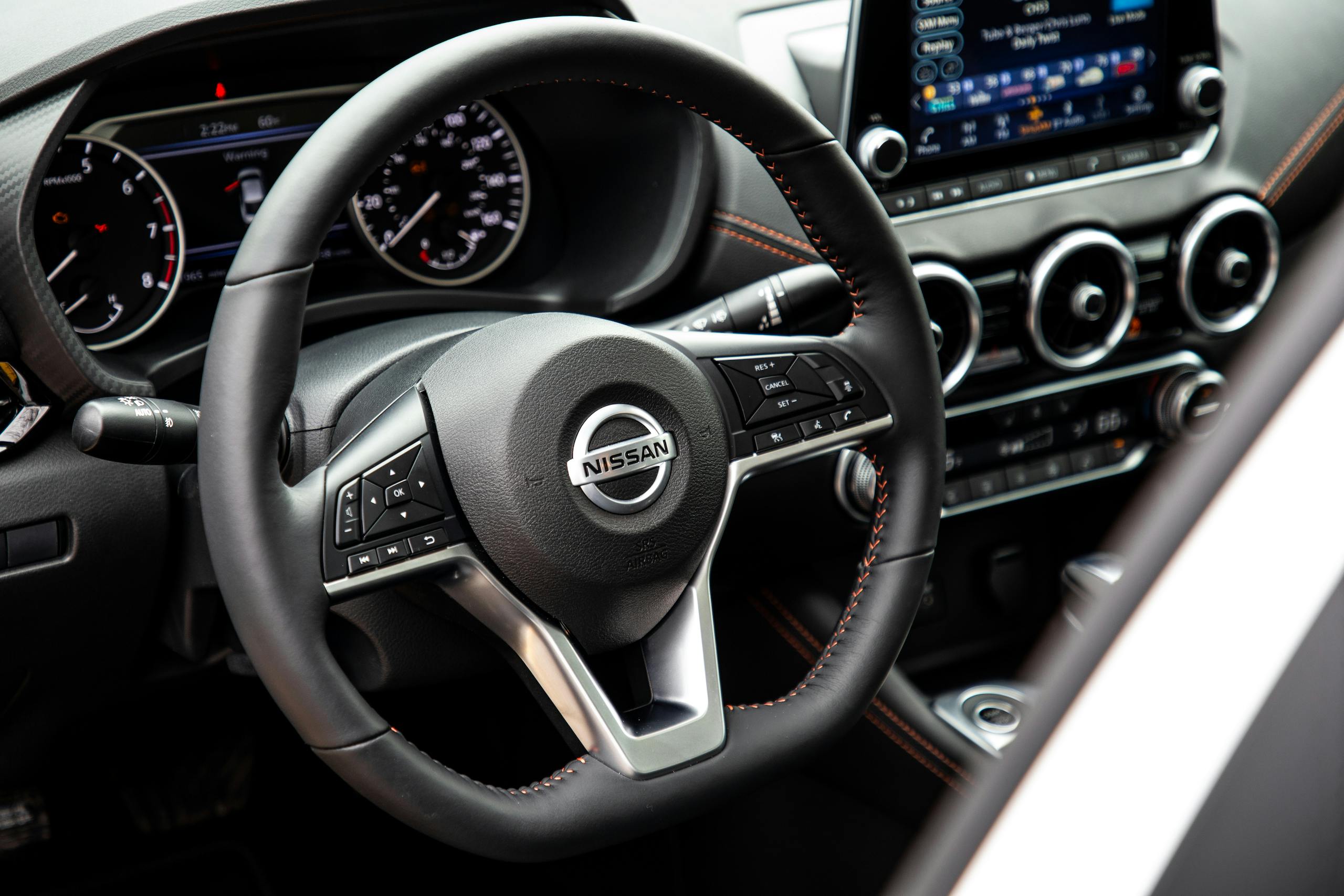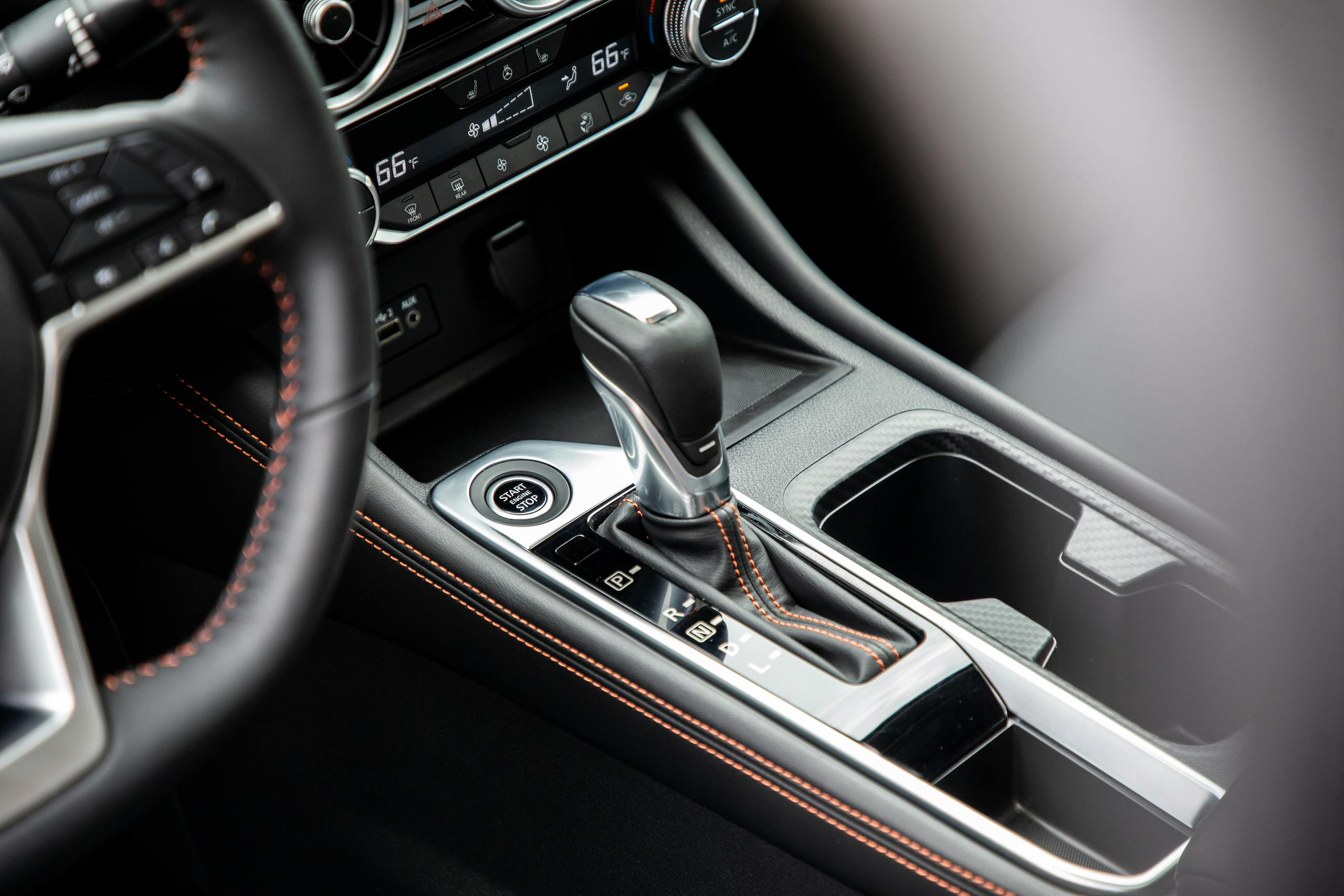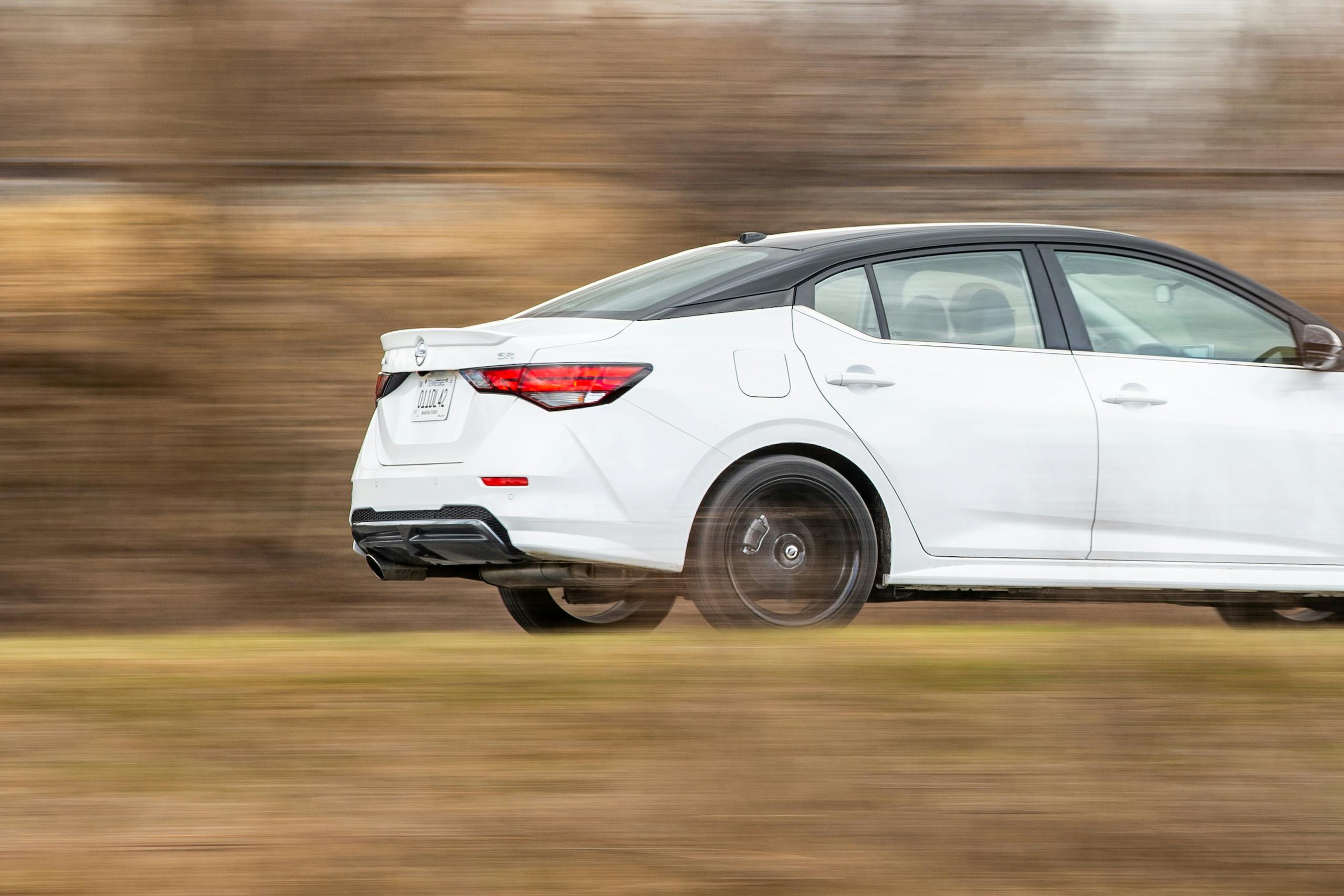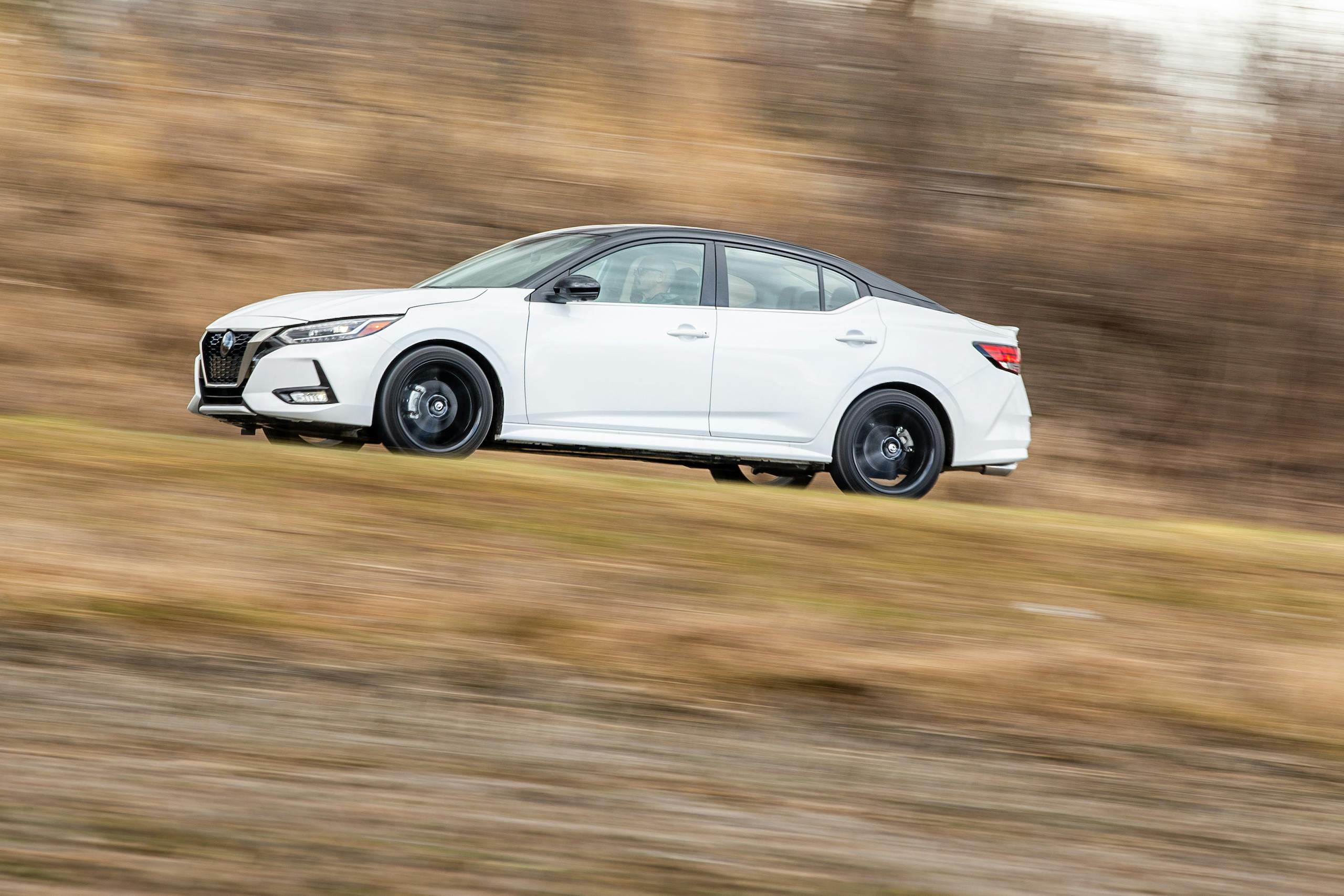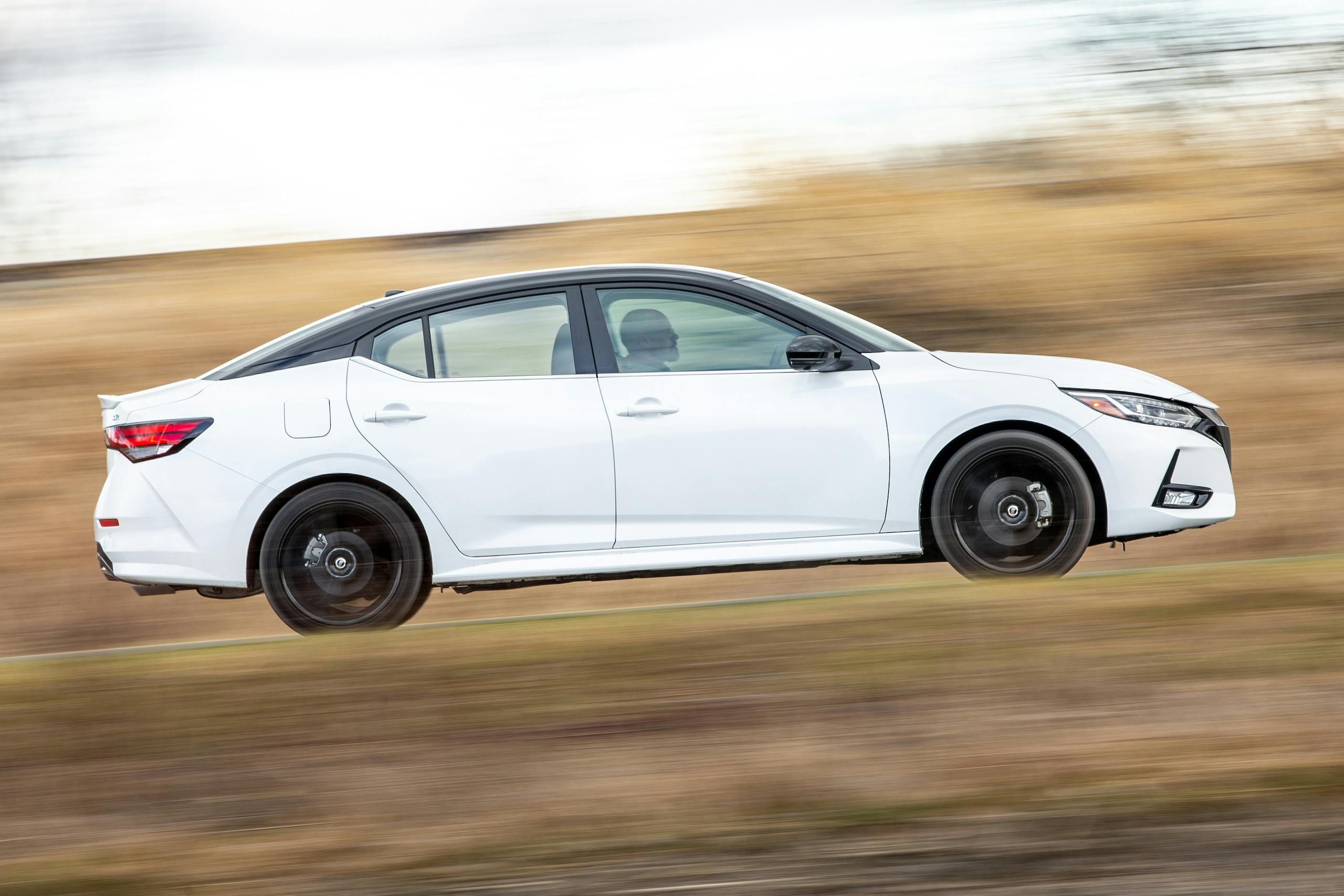Review: 2022 Nissan Sentra 2.0 SR
Joe surveyed the parking lot and locked eyes on a recently-delivered 2022 Nissan Sentra test car. “I remember the Sentra S-E-R,” he said, noticing the SR badge on the sedan’s rear. “That car was great. Back in the day, see, Nissan used to be like BMW. Its buyers were very much in the know.”
A 30-year veteran of the car magazine industry, Joe DeMatio now serves as Hagerty’s senior manager of content, where he ensures that the Drivers Club magazine is delivered in all its glory, on time, to your mailbox. He has two German Shepherds, an affinity for fine loose-leaf tea, and a weekly subscription to Automotive News. Joe is in the know. So, when he started reminiscing about Nissan and its fall from grace as an enthusiast brand, I listened. After all, I was still in elementary school when the Japanese company was first facing financial collapse in 1999. If you are clueless to the strife—like I was—here’s what happened:
To avoid the grave, Nissan brokered an alliance with Renault, and the French company’s highly touted executive Carlos Ghosn became CEO. Nicknamed “Le Cost Killer,” Ghosn was tasked with resuscitating Nissan. Growth was immediate, and in 2011, he made the overzealous promise of a 10 percent US market share by 2017. Utilizing a growth-at-all-costs mentality to achieve his ambitious figure, Nissan set to work. Among its most aggressive tactics, the company utilized a stair step incentive model and awarded cash bonuses to dealerships who hit their sales quotas. Under the gun to hit their targets, dealerships deployed sketchy tactics, like fire sales, to quickly move inventory. Prices were topsy-turvy depending on the day, and Nissan’s brand perception was under fire.

Meanwhile Nissan’s lineup was experiencing a race to the bottom, as cost cutting began to influence vehicle quality. By 2015, its beloved Pathfinder was a unibody lump, and its legacy Z-car was a plate of reheated nachos. Two years later, Nissan pursued the thin-margined, brand-diminishing game of rental sales, doubling down on supply to North American rental lots. The days of free-loving Datsun, favorable buff-book reviews, and enthusiast models were but a distant memory.
Like Joe, the Nissan Sentra has been around to witness the brand’s best—and worst—days. Replacing the Datsun 210 in 1982, the Sentra debuted as a compact available in four flavors: two-door sedan, four-door sedan, five-door wagon and three-door hatchback coupe. (Fun fact: The name “Sentra” was created by NameLab, the same firm that coined Acura, Lumina, and other popular morpheme-based titles.) Over the years, the car ballooned in size, until the sixth generation (2006) when it was classified by the EPA as a midsize sedan.
Fast forward to 2020: Ghosn was out, replaced by new Nissan boss Makoto Uchida. Likely to imply a clean slate, the company rolled out a completely redesigned logo. New Nissan had arrived—or at least that was the hope. Among the rollout of fresh-faced vehicles, Nissan introduced its eighth-generation Sentra, which was back to compact status. Only available as a four-door sedan, the Sentra rode on a new platform, was more powerful, and had better fuel economy than the outgoing model. It was also sleeker, as designers lowered the grill and introduced a few suit-like creases into the body panels.
Much of the 2020 Sentra has carried over to the 2022 piece. It’s still not perfect, nor is it an enthusiast’s car. The sedan is, however, a bona fide people mover. And young people at that. Find any student parking lot on a college campus, and you’re liable to spot several Sentras—likely not this specific trim level, though. The SR supplied to us is the most expensive Sentra that Nissan produces. A rear spoiler, black side mirrors, extended rockers, a black chrome grille, a chrome exhaust tip, LED headlights, and 18-inch wheels round out the list of goodies in the SR package. You’ll pay $2470 for all of this.
Our test rig came with a $27,000 sticker price, which included two-tone paint ($595), carpeted floor mats ($205), a ground-and-ambient lighting package ($500), and 18-inch black alloys ($690). Think: the Rolls Royce Ghost of Sentras.
As with the Ghost, this Sentra SRs interior is one of the quietest in its respective class. Spacious and sporty, the interior outshines its price tag. The leather-wrapped D-shaped wheel, for example, looks more Corvette than Camry. Its “Zero Gravity” front buckets are sublime and equally handsome. And heated, along with the wheel. Backseat occupants are awarded a remarkable amount of legroom (though they may have to hunch a bit to accommodate the low roofline). Those seats fold down 60/40-style to unlock even more storage space by linking the rather roomy trunk with the big back seat. Throughout the SR’s cabin, liberal use of leatherette, orange stitching, and carbon fiber inlays combine for a cockpit you wouldn’t expect from a rental-lot ringer.
Something that you will likely find in abundance at your local lot, however, is a lifeless inline four—like the one transversely mounted in the Sentra. From the penthouse to the outhouse, the powertrain is arguably the sedan’s greatest detriment. Sure, the 149-horsepower engine has more juice than it did in the last generation, but it’s still slower than cold sap. Aside from smoother shifts, the CVT doesn’t do the powertrain any favors either. The car groans from gear-to-gear rather than a typical—and more aggressive sounding—shift, pause, cog. Highway merges require flat footing, lest you become a moving chicane.
Power (or lack thereof) aside, the Sentra SR would make a great daily driver. It’s quiet and stable at high speeds. Unlike many compacts and subcompact crossovers, this Nissan doesn’t require numerous micro adjustments of the steering wheel to keep it pointed straight. Tight parking lot maneuvers suffer in return, but the trade-off is worth it. The sedan’s strut front and multi-link rear offer a relaxed handle, with slightly too much roll while navigating on-ramps and other tight curves. And the four-wheel discs in SV and SR models provide plenty of stopping power behind a rather soft pedal—which isn’t so much a detriment on a car that will never see the race track. That’s a shame, because I know more than a few racers who would kill for the Sentra’s rear sightlines and blind spot monitors smartly integrated into its A-pillars.
Further solidifying the Sentra SR as a daily-driving choice is its stellar eight-speaker Bose sound system. Paired with the quiet cabin, the system, at times, sounded better than some recently sampled Harman Kardon setups. If only the Sentra’s tech was in the same zip code as its speakers. The SR’s eight-inch touch screen is plenty nice, but its functionality is not. For one, the USB—used to establish CarPlay—would occasionally fail to recognize the phone. This is a bummer because the native tech wasn’t intuitive and required more than a week to smoothly operate. Under bridges, the display would overreact to brief shadows and switch to night mode for the following few seconds; distracting to say the least. None of the bugs could be considered a dealbreaker, though, and the infotainment suite, with logically placed buttons and dials, is plenty suitable for a $40,000 full-size sedan.
Herein lies the problem for our dear Sentra: collectively the compact segment is punching above its weight and in many ways outclassing their mid-size counterparts. Honda just rolled out a new-for-’22 Civic, and Toyota’s Corolla is in the middle of a Britney Spears-level comeback. Add the Hyundai Elantra into the mix, and suddenly the Sentra—a perfectly suitable compact—potentially drops off the podium.
So, what might cause prospective compact buyers to opt for the Sentra? You guessed it: Nissan’s brand. Just as they did thirty years ago, the company is asking you to make the emotional choice (which is a big request considering prospective buyers for this segment are typically the most rational, obsessed with safety scores and cubic volume of trunk space). Luckily, in the past two years, Nissan’s top brass have taken steps to restore the brand image, from a refreshed product line to a presence in other activities—like Formula Drift and Formula E—that don’t directly contribute to its bottom line. Even bigger, the troop just dropped a brand-new Z-car. If you squint hard enough, long enough, you might be able to see the Nissan of old. How long before we see a Nismo-branded Sentra or a two-door SE-R? Those in the know will wait with bated breath. Until then, give the Sentra a test drive, if you’re in the market.
***
2022 Nissan Sentra 2.0 SR CVT
Base price/as-tested: $23,075 / $27,615
Highs: Interior is spacious, smart, and silent; eighth-generation styling is still top three most handsome in its segment; SR package is a nice way to distinguish from rental lot ringers.
Lows: Drivetrain more lifeless than a graveyard, occasional tech glitches, forced to play ball with the Civic and Corolla.
Sum-up: In a segment aimed at rational buyers, Nissan is asking you to make an emotional decision. Is the brand enough to sway you into this respectable daily driver?
